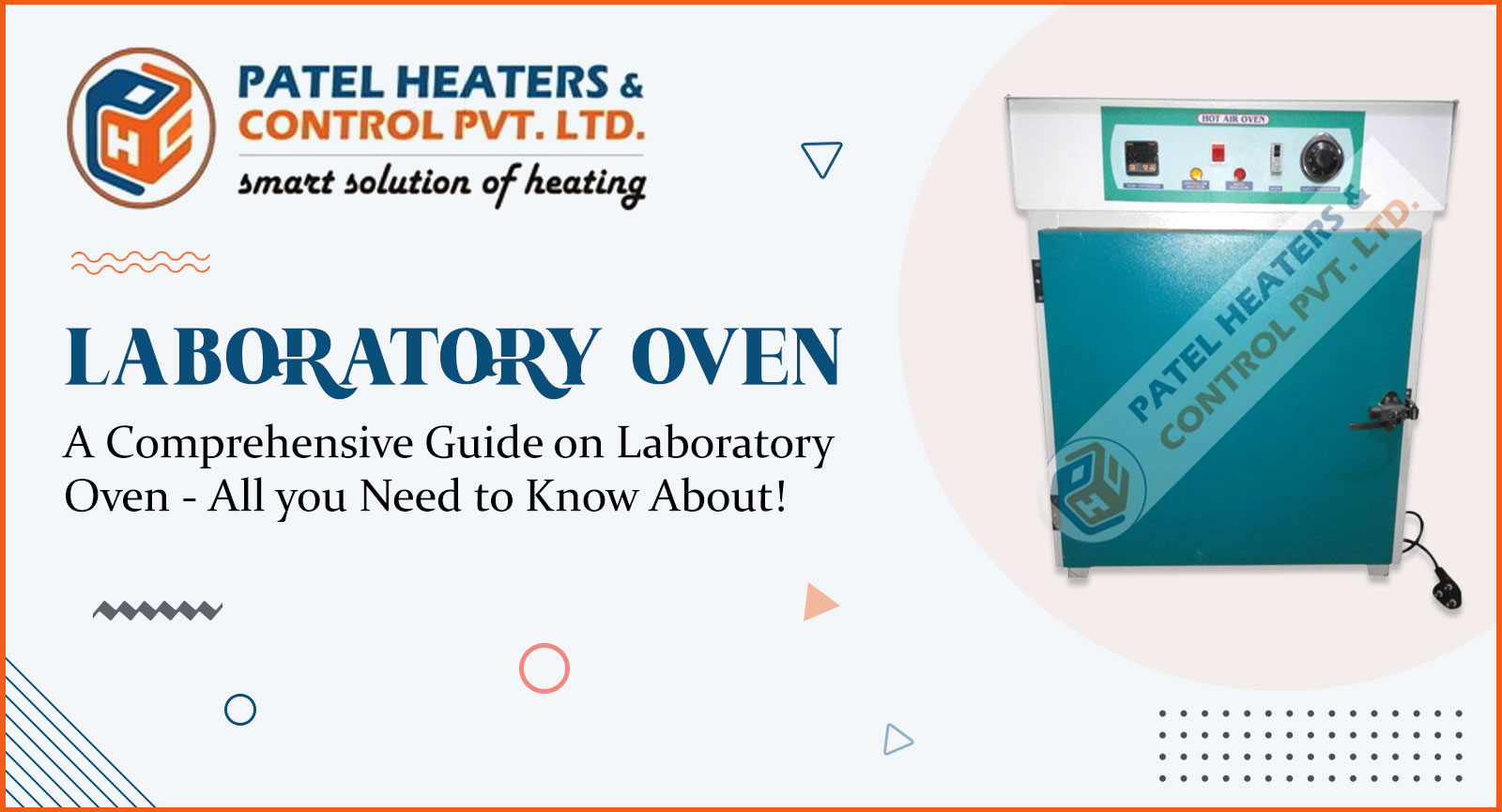A Comprehensive Guide On Laboratory Oven-All You Need To Know About
Laboratory Oven are a popular device used in forensic and research labs. These ovens are specifically designed to give precise temperature control and consistent temperatures throughout the heating process. Laboratory drying ovens are commonly used for die-bond curing, drying, annealing, Polyimide baking, and sterilizing. The size of these lab ovens ranges from one cubic foot to 0.9 cubic meters. Some ovens can achieve temperatures of around 300 degrees Celsius. These temperatures are then applied to the sample from all sides of the oven to create consistent heat.
A variety of lab ovens are available in the market including;
- Standard digital ovens – utilized for drying and heating while maintaining temperature control and safety.
- Heavy-duty ovens – used in industrial labs for testing and drying biological samples.
- High-temperature ovens – custom-built with additional insulation lining on doors and cabinet walls. Mainly used in the aerospace industry.
- Vacuum ovens – used in forensic labs for developing fingerprints.
- Gravity convection ovens – used in biology labs to remove biological contamination from samples.
Select the Laboratory Oven Type Based on Your Application
Gravity Convection Drying Oven
These drying ovens ensure gentle, natural circulation of warm air — ideal for sterilizing, drying, and other applications requiring subtle airflow. These ovens are a perfect choice for simple heating like pre-heating, conditioning, baking, drying, and curing.
Mechanical Convection Drying Oven
These ovens feature a motor and fan to circulate air for heating and faster drying time. This oven is suitable for drying and heating samples that need a higher level of accuracy, repeated samples, and high moisture content. Convection drying ovens are used for heating and drying rubber. Other applications include the digestion of proteins and starches, serum protein analysis, etc.
Vacuum Oven
These ovens create a vacuum to remove moisture from a sample. Vacuum ovens are suitable for controlled processes like vacuum embedding, plating, and semiconductor processing. An ideal choice for the pharma, food drying, and electronics sectors.
How does a Laboratory Oven Work – The Working Process
The working process of a ventilated oven is based on air convection. A lab oven consists of several components to ensure uniform heating throughout the chamber. The heating element is located in an external envelope of a lab oven. This shields the specimen from radiant heat, yet the resulting temperature of the oven walls is hot enough to heat and dry a specimen.
Gravity or mechanical convection is used to achieve convective heat transfer. Cooler air is displaced by warmer air and directed toward the heating element until the entire chamber is heated. Mechanical convection lab ovens are preferable since this approach has poor heat distribution and a longer preheat time than mechanical convection.
Laboratory ovens heat the materials within by circulating hot air around the chamber. The sort of heating element and airflow pattern employed will be determined by the oven’s model. The working operation of a typical lab oven is separated into four major functions:
Heating the Element
Gravity convection ovens heat the substance without using dehumidifiers. This method is mostly utilized in pharmaceutical, manufacturing, and material science laboratories.
Curing
This process includes drying and baking and is used to harden the chemical elements in a substance. The application is used in different industries including polymer research, nanotech and semiconductor industries, epoxies manufacturing sector, etc.
Drying
Drying is the most common application for laboratory ovens; it removes moisture from materials, samples, and so on. For standard drying, forced-air ovens, vacuum ovens, and gravity convection ovens are used in a variety of industries including environmental, clinical, and biological. These products built by the leading laboratory oven manufacturers in India remove moisture from samples while simultaneously lowering the boiling point of water, allowing lab samples to be dried at lower temperatures.
Annealing
This application is used to heat glasses or steel to ensure ductility development. The process is also used in metallurgy, medical device manufacturing, and material science. Each of these industries necessitates the use of high-temperature ovens. The health industry, for example, uses the annealing process to anneal plastics into syringes and catheters. This procedure entails heating and cooling.
How to choose the right Laboratory Oven for you?
Determine the Right Size
The first thing that you need to consider is the size of a ventilated oven. Choose an oven that is neither too small nor too large. Think about the size of your samples and how many you need to put in the oven at once. Choosing a small size might fit in your space but not your samples. Purchasing a large-sized oven when you do not want it will waste energy and reduce cost efficiency.
Consider the Required Temperature
The maximum temperature of an oven ranges from hundreds to thousands of degrees. Choose a laboratory oven based on the temperatures required by your materials. Like size, you don’t want to choose one with a wider temperature range if you don’t need it.
Look for the Optimal Thermal Insulation
Laboratory ovens frequently run for lengthy periods at high temperatures, consuming a lot of electricity. One of the leading laboratory oven suppliers in India offer ovens with appropriate thermal insulation to limit thermal transmission rates. This will keep the generated heat from escaping the chamber, reducing wasted energy and lowering energy expenses.
Easy Maintenance
The next factor you should consider is maintenance. So, look for a laboratory drying oven that is easy to clean and maintain. Purchase an oven built with stainless steel and rounded corners for easy cleaning and maintenance. Choose the oven with trays, shelves, and a wider door so that you can easily remove them and clean the oven from the inside.
Reliable Safety Features
Choose an oven with a built-in over-temperature thermostat to protect your critical samples from fire and overheating. The thermostat will enable your oven to turn off if the temperature rises above the preset level. So, look for features including a temperature deviation alarm, overcurrent protection, and auto-start after power loss.
Searching for a high-quality and robust laboratory oven? End your search with Patel Heaters & Control Pvt Ltd. We are one of the preeminent manufacturers and suppliers of laboratory ovens. Contact us today to know more about our products!
Patel Heaters
Patel Heaters and Control has immense expertise in the manufacturing of Industrial heaters and heating elements. We have been providing heating solutions to our clients since 1982.







